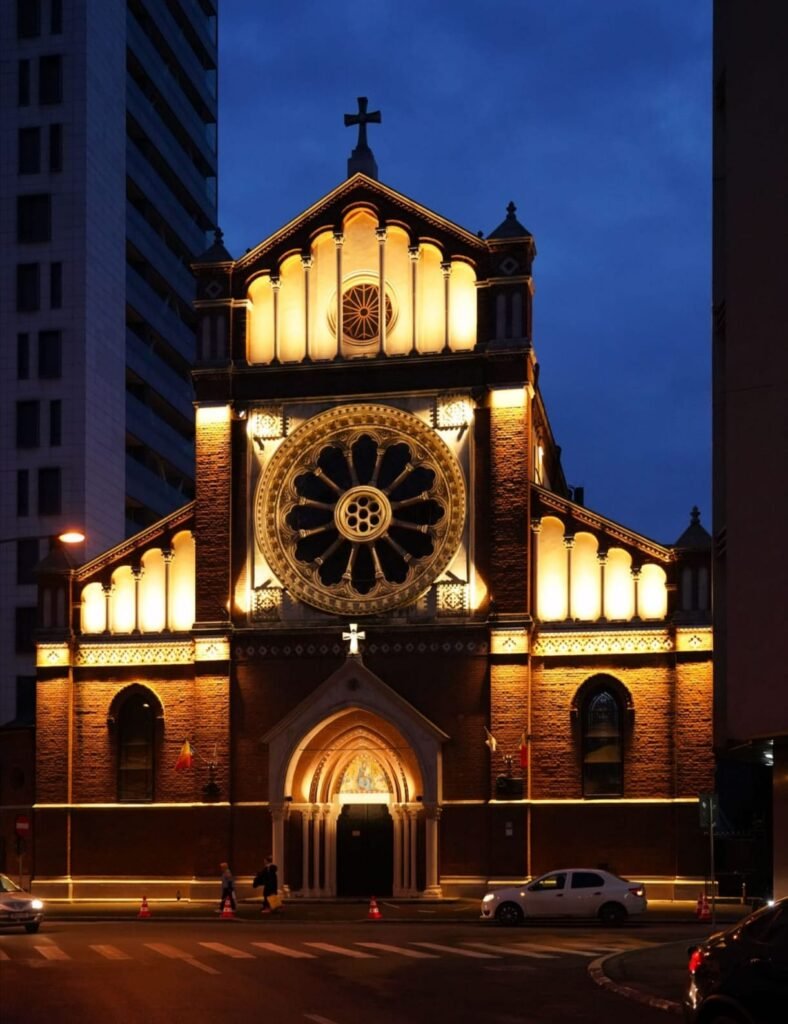To talk about the architectural lighting of heritage buildings, we first need to look at them more closely. Some buildings are silent, and some buildings speak. Heritage buildings don’t just speak—they tell stories. Stories of the past, of identity, of what we risk forgetting. But what happens to these stories after sunset, when shadows fall and the details disappear into darkness?
Architectural lighting for heritage buildings is not a luxury—it’s a responsibility. This isn’t just about visibility, but about emotion, respect, and keeping a living spirit present, even in the dark.
Why is architectural lighting important in heritage preservation?
Every historic building has a unique identity. The right lighting can elevate it—revealing sculpted details, forgotten textures, and proportions that might otherwise go unnoticed. It creates atmosphere, a sense of presence, and a quiet reverence for what once was.
Without a thoughtful lighting design, all the restoration effort risks going unnoticed. Facades appear dull, courtyards feel cold, and the building becomes mute. Architectural lighting in heritage is not decoration—it’s part of the message.
Common Mistakes in Lighting Historic Buildings
Let me know when you’re ready to continue with this section or want help drafting it!
- Excessive or poorly positioned lighting – turns a charming building into something inauthentic.
- Using inappropriate color temperatures – can produce a harsh effect that cancels out the warmth of original materials.
- Neglecting lighting design during the planning phase – results in lighting being added as an afterthought, disconnected from the overall restoration vision.
- Visible and intrusive fixtures – instead of enhancing the architecture, they visually compete with it.
What Questions Should You Ask Before Starting the Project?
A successful project begins with simple—but essential—questions:
- What story do I want to tell?
- Which areas are defining? What do I want to highlight? What would I rather leave in shadow?
- What atmosphere do I want to create? Warm, monumental, calming, mysterious?
5 Essential Principles in Lighting Design for Heritage Buildings
- 1. Discretion – Light fixtures should blend into the setting, not demand attention.
- 2. Respect for Materials – Stone, wood, and aged iron require lighting that protects and enhances their texture.
- 3. Atmosphere, Not Just Illumination – A building is felt before it is seen.
- 4. Thoughtful Accents – Better to have three meaningful points of light than many with no clear intention.
- 5. Smart Control – Lighting scenarios tailored to different times of day or seasons enhance usability and emotion.
Light as a Narrative Character
A good project doesn’t make you say, what beautiful lighting, but rather, what a beautiful building. That’s when you know it worked—when the building begins to speak again. Maybe through a gently lit archway, a stained glass window that comes alive at night, or a courtyard that becomes a stage for memories.
Lighting design for historic buildings is a balancing act between technique and poetry—between what can be done and what should be done.
Give buildings their voice back—through light.
Architectural lighting in heritage buildings is not just a detail. It is the visible voice of restoration—the way a building continues to live after the restorers have left and evening silence settles in.
Good lighting is more than technique. It is emotion, respect, continuity—and above all, a way for old buildings to live again, night after night.

